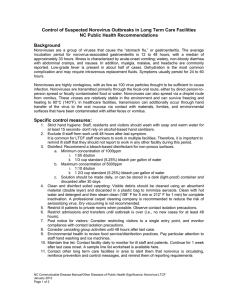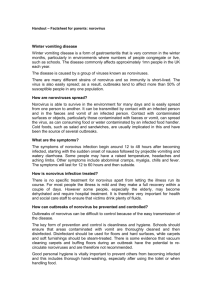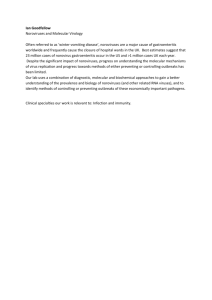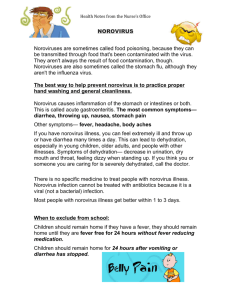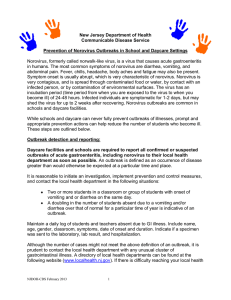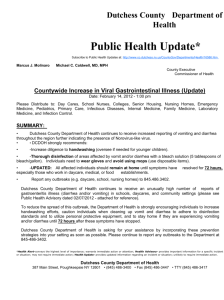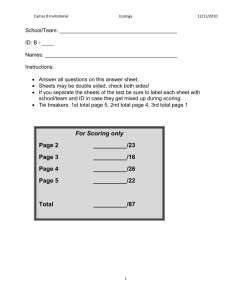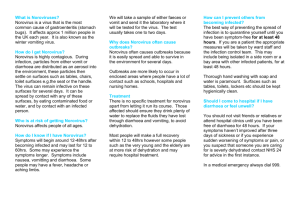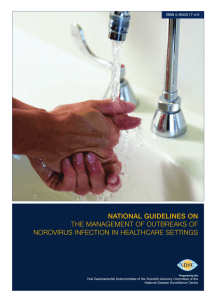Disease Detectives KEY Camas B Invite 2010
advertisement
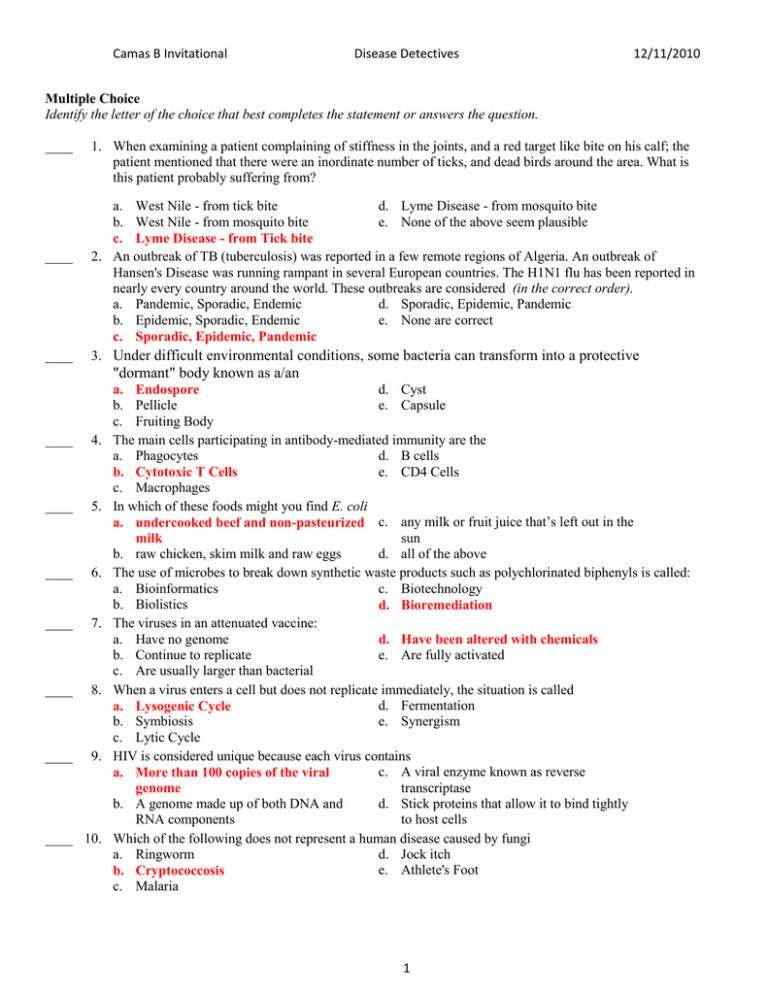
Camas B Invitational Disease Detectives 12/11/2010 Multiple Choice Identify the letter of the choice that best completes the statement or answers the question. ____ ____ ____ 1. When examining a patient complaining of stiffness in the joints, and a red target like bite on his calf; the patient mentioned that there were an inordinate number of ticks, and dead birds around the area. What is this patient probably suffering from? a. West Nile - from tick bite d. Lyme Disease - from mosquito bite b. West Nile - from mosquito bite e. None of the above seem plausible c. Lyme Disease - from Tick bite 2. An outbreak of TB (tuberculosis) was reported in a few remote regions of Algeria. An outbreak of Hansen's Disease was running rampant in several European countries. The H1N1 flu has been reported in nearly every country around the world. These outbreaks are considered (in the correct order). a. Pandemic, Sporadic, Endemic d. Sporadic, Epidemic, Pandemic b. Epidemic, Sporadic, Endemic e. None are correct c. Sporadic, Epidemic, Pandemic 3. Under difficult environmental conditions, some bacteria can transform into a protective "dormant" body known as a/an ____ 4. ____ 5. ____ 6. ____ 7. ____ 8. ____ 9. ____ 10. d. Cyst a. Endospore b. Pellicle e. Capsule c. Fruiting Body The main cells participating in antibody-mediated immunity are the a. Phagocytes d. B cells e. CD4 Cells b. Cytotoxic T Cells c. Macrophages In which of these foods might you find E. coli a. undercooked beef and non-pasteurized c. any milk or fruit juice that’s left out in the sun milk b. raw chicken, skim milk and raw eggs d. all of the above The use of microbes to break down synthetic waste products such as polychlorinated biphenyls is called: a. Bioinformatics c. Biotechnology b. Biolistics d. Bioremediation The viruses in an attenuated vaccine: a. Have no genome d. Have been altered with chemicals b. Continue to replicate e. Are fully activated c. Are usually larger than bacterial When a virus enters a cell but does not replicate immediately, the situation is called d. Fermentation a. Lysogenic Cycle b. Symbiosis e. Synergism c. Lytic Cycle HIV is considered unique because each virus contains c. A viral enzyme known as reverse a. More than 100 copies of the viral transcriptase genome b. A genome made up of both DNA and d. Stick proteins that allow it to bind tightly RNA components to host cells Which of the following does not represent a human disease caused by fungi a. Ringworm d. Jock itch e. Athlete's Foot b. Cryptococcosis c. Malaria 1 Camas B Invitational Disease Detectives 12/11/2010 ____ 11. A plasmid is a/an a. extra-chromosomal piece of DNA that c. body found in the cytoplasm that directs the union of amino acids to form a protein might confer a selective advantage to a microbe b. chromosomal site to which genetic d. molecule that carries the genetic message activity can be traced of the chromosomal DNA ____ 12. Small segments of DNA that have the ability to move from one position to another in the bacterial chromosome are called: a. Mutations d. Transposons b. Loci e. Endonucleases c. Okazaki Fragments ____ 13. Conjugation refers to the process by which a. a virus carries random DNA fragments c. a donor bacterial cell transfers some of from a donor bacterium to a recipient its genetic material to a recipient bacterium bacterium b. a virus carries specific genes from a donor d. live bacteria acquire DNA fragments from bacterium to a recipient bacterium the environment ____ 14. Plague transmitted by a FLEA is an example of what mode of transportation? a. Droplet c. Vector b. Fomite d. Airborne ____ 15. A secondary condition arising from treatment of a primary condition (for example a transplanted cornea from an infected person or medical instrument) is called c. Carcinogenic a. Iatrogenic b. Teratogenic d. Biotogenic ____ 16. An ELISA test isolates and compares ____ given off from the infected person a. Virus Particles c. Antibodies b. Antigens d. Prions ____ 17. When a person who is contaminated with a disease is confined to a home or restricted area, this is called _______. a. Contagious c. Epidemic d. Endemic b. Quarantine ____ 18. A “disease reservoir” is a. A lake, usually with a dam that has c. A killed or weakened strain of a pathogen diseased water d. A disease that was once a major health b. A person, place or thing where the problem and is now coming back infectious agent survives 2 Camas B Invitational Disease Detectives 12/11/2010 Case Study: Noroviruses are the most common cause of outbreaks of acute gastroenteritis worldwide. Norovirus outbreaks affect persons of all ages and occur in a wide variety of settings (e.g., nursing homes, hospitals, restaurants, communities, schools, day care centers, military barracks, and cruise ships). During fall 2008, three norovirus outbreaks occurring on college campuses in California, Michigan, and Wisconsin were reported to CDC. Public health investigations led by the respective state and local health departments were conducted to characterize the extent of the outbreaks and implement appropriate control measures. This report summarizes the investigations of these outbreaks, which resulted in a total of approximately 1,000 cases of reported illness, including at least 10 hospitalizations, and prompted closure of one of the three campuses. Median duration of the three outbreaks was 19 days (range: 16--20 days), and the attack rates ranged from 1.5% to 12.9%. Because of the potential for widespread infection and rapid transmission on college campuses, efforts to prevent and control norovirus outbreaks in these settings should focus on promoting hand hygiene, environmental disinfection, and exclusion of ill food workers. Examine the article above. Use that information and your understanding of epidemiology to answer the questions in the space provided below. If you need additional paper, please ask the proctor. Clearly label each sheet with the name of your school and team. 3 Camas B Invitational Disease Detectives 12/11/2010 1. a. (10 points) Why are noroviruses considered a public health threat (5 reasons)? NVs cause acute gastroenteritis, with vomiting and diarrhea. There is potential for widespread infection (of all ages and settings) and rapid transmission. Multiple modes of transmission prolonged asymptomatic shedding of virus particles environmental stability of the norovirus lack of persistent cross-protective immunity b. (2 points) Which of the triad in the chain of transmission should be considered in this threat? Mode of transmission should be the primary consideration in this threat. c. (5 points) Why? Because the virus is transmitted on the surface of shared inanimate objects (and so can be “fought”), but can infect a wide variety of people (so not host) with any of many similar microbes (noroviruses, so not just 1 specific agent). 2. ( 1 point) How is a norovirus transmitted? a. Fomite b. Vector c. Zoonosis 3. (9 points) What types of information would you consider the MOST important in ascertaining the existence of an outbreak? List three of four. Explain why each is important. Severity – use records to compare actual cases with expected # of cases for the area; gives an idea of how far the infection has spread Potential for spread – gives some idea of how widespread the problem may become Public concern – gives an idea of the psychological impact of the epidemic Availability of resources – relates to potential for spread (less resources = more spread) 4 Camas B Invitational Disease Detectives 12/11/2010 4. (3 points) What information is needed to create an epidemic curve of identified cases? The time and date and the number of cases 5. (5 points) Which type of study would be most beneficial in looking at norovirus outbreaks? Justify your answer. Using case control studies would be best, because it would look at students in different groups at the same time (e.g. residence halls, eating locations, etc.) and would work backwards in time from the effect (symptoms) to the exposure. 6. (9 points) If a norovirus were to become a pandemic threat, what strategies could be utilized to reduce contact between people? List three. Pick 3 of 4 Encourage students to stay in their dorms and not to go to classes or congregate in common areas. Restrict ill students and staffs from food preparation activities for at least 72 hours after symptoms have been resolved. Discourage sharing of eating utensils, toothbrushes, linen, and other personal items Disinfect bathrooms and any area possibly infected by ill persons 5 Camas B Invitational Disease Detectives 12/11/2010 7. (16 points) Using the evidence and information above, write a brief report to the Center for Disease Control, listing your assessment of the norovirus outbreaks and your recommendations in combating this health problem in the United States. Background Info (6 points possible) Date Reporting agency Location Disease Circumstance Duration Assessment - Details of the investigation (5 points possible) Who contracted the disease Number of sample pool affected Degree of severity and description of symptoms How investigation was made (methodology) Limitations of the study Recommendations (5 points possible) Monitor for onset of outbreak Environmental disinfection Educate and encourage good hygiene Discourage sharing of utensils Post outbreak, discourage large group assembly Limit participation of ill students/staff in food preparation activities until 72 hours after illness is resolved. 6
